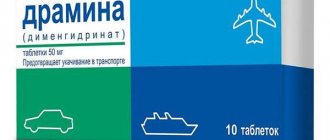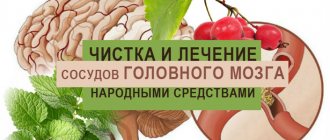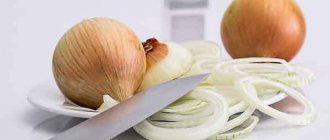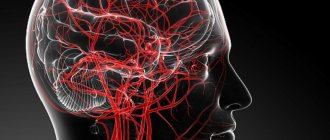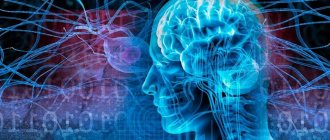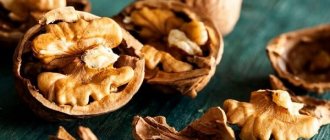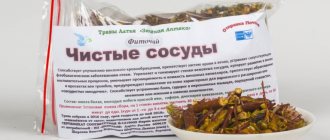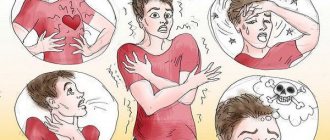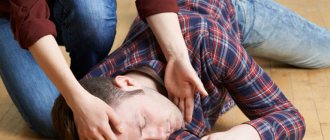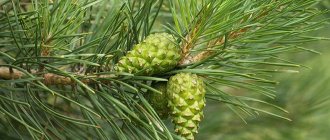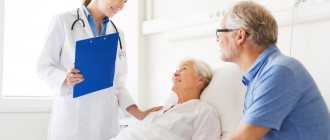What is epilepsy?
In fact, this disease has not even been fully studied; in regional hospitals, for more than half of patients with epilepsy, doctors cannot even tell the cause of the disease, and all treatment consists of pills that simply inhibit brain function, thereby reducing the number of seizures, and this does not always help and not everyone.
Meanwhile, the disease is based on 2 factors: inherited predisposition, environmental influences, and usually organic brain damage. In most cases, epilepsy is not only a self-sustaining, but also a progressive process, accompanied by impaired metabolism of brain tissue, hypoxia (oxygen starvation), and impaired blood supply to the brain. An attack, especially a convulsive one, is stressful for many body systems, especially the central nervous system.
Another unfavorable consequence of immune disorders in epilepsy is DIC (disseminated intravascular coagulation) syndrome, which not only leads to metabolic disorders in the brain, but also impairs the transport of antiepileptic drugs into the brain tissue. This syndrome occurs in 100% of patients with status epilepticus and in most patients with frequent seizures.
Kinds
The classification of vasomotor rhinitis is based on its causes and mechanisms of development. The following types of disease are distinguished:
- medicinal (caused by decongestants or oral medications);
- hormonal (during pregnancy, puberty, diseases of the endocrine system);
- reflex (food, cold and others);
- psychogenic (associated with emotional stress);
- idiopathic (unexplained nature);
- mixed.
Modern treatment of epilepsy
Modern chemotherapy drugs used to treat epilepsy alleviate, but do not cure the disease; moreover, they damage the psyche. Epilepsy is treated for years, sometimes throughout life. If there are no seizures while taking anticonvulsants, they cannot be canceled abruptly, otherwise the seizures may recur with renewed vigor. In general, it is difficult to call this a treatment; in fact, it is simply a muffling of symptoms.
In general, the whole world has been successfully fighting this disease for a long time, but for us everything is still difficult! Yes, it seems that there are centers with modern equipment that are able to find the cause of the disease and treat exactly the cause, but it is difficult for an ordinary person to get there. So the person is left alone with his diagnosis and traditional methods and herbal medicine come in. Let's say right away that this is not entirely correct, herbal medicine is very good in this case as a supporting method of treatment, but not as the main one, although for many, unfortunately, this is the only method of treatment.
Other means and methods of traditional medicine
Today, more and more researchers of this disease are inclined to believe that a healthy and active lifestyle helps reduce and prevent epileptic seizures.
An interesting fact is that patients are well stimulated by clenching their hands into fists, music lessons, drawing and other creative expressions. In some cases, improvement occurred after some “magical” influences or reading a prayer.
The use of magnets is also noted if they are placed under bare feet, palms, and to the temporal areas of the head. It has been determined that it is best to use magnets three times a day. According to reviews, this method has no side effects.
Really, what is epilepsy? You will find the answer to this and other questions in this video:
The use of herbal medicine in the treatment of epilepsy
The use of herbal medicine, that is, herbal treatment, makes it possible to influence all stages of the development of epilepsy, starting with the causes, and this can even be tonsillitis, sinusitis, pyelonephritis, inflammation of the genital organs, which contribute to increased pressure inside the skull, a general deterioration of the condition and, as a consequence, excitability of the brain . On the other hand, long-term use of anticonvulsants disrupts the functioning of all internal organs (pancreas, liver, stomach, intestines, kidneys, hematopoietic system), which aggravates the severity of epilepsy. It turns out to be a vicious circle.
Herbal medicine allows you to break this vicious circle. Using sedative and anticonvulsant herbs, we influence all stages of its development, using the antimicrobial, antiviral, antiparasitic, anti-inflammatory, adaptogenic, antiallergic, immunostimulating, detoxifying effects of plants.
Herbs normalize the functioning of the pancreas, kidneys, cardiovascular system, liver, regulating blood pressure, eliminating diarrhea and constipation, dysbacteriosis, normalizing the mental state and functionality of the gastrointestinal tract of patients, eliminating depression, improving sleep.
The inclusion of diuretic herbs allows you to reduce intracranial arterial pressure, while there is no need to take potassium supplements, since it is contained in many herbs. Plants with antidepressant effects can not only improve mood and relieve anxiety and fears, but also improve the processes of adaptation (adaptation) of the body to the environment, reducing the destructive effect of stress, improving overall well-being, increasing vitality, reducing the severity and frequency of attacks. The use of herbal medicine leads to the disappearance of patients' resistance to the action of anticonvulsants, increasing the effectiveness of anticonvulsant therapy and reducing its toxic effects. This allows you to reduce the doses of these drugs over time and even stop them altogether, doing this slowly and gradually against the backdrop of continuous and long-term use of herbs, even in the absence of attacks.
The feasibility of treating epilepsy with herbal medicine
Although we are against herbal medicine being the main method of treating epilepsy, it is still worth noting that there are plenty of examples of herbal cures for this disease in the world. Herbal medicine should be used as a supportive method, and treatment should be carried out by professionals, especially in cases where attacks recur more than once every six months. And remember, in order to defeat epilepsy, you need a general healthy state of the body, and this can at least be achieved through physical exercise, fresh air and proper nutrition.
It is important to remember that herbal medicine is a whole science and you should not neglect it, especially when treating serious diseases. We recommend that you read the material: Why doesn’t herbal medicine help?
Symptoms of vasomotor rhinitis
The main signs of vasomotor rhinitis:
- difficult nasal breathing, permanent or temporary, occurring either on one side or the opposite, especially when lying on one side and turning over;
- moderate nasal discharge;
- discharge running down the back of the throat.
Some patients have a clear connection between the appearance of symptoms of the pathology and the intake of food, alcohol, and exposure to the cold. In other patients, no obvious triggering factors can be detected.
Depending on the prevailing symptoms, patients with rhinitis can be divided into groups with “wet” and “dry”, stuffy nose.
Sneezing, itching, severe runny nose, and lacrimation are more common with the allergic variant of the pathology, but can also be observed with the vasomotor variant, but much less frequently.
With the medicinal option, the main complaint is dependence on vasoconstrictor drops and sprays.
When examining a patient, the doctor may notice signs of an imbalance in the autonomic nervous system:
- pallor or cyanosis, coldness of the extremities;
- increased sweating;
- a tendency to decrease body temperature, blood pressure and slow heart rate;
- drowsiness, irritability, hypochondriacal disorders.
During rhinoscopy, the inferior turbinates of the nose are enlarged, their surface is reddened, with a bluish tint, or pale. Sometimes hemorrhages are visible.
Herbs for epilepsy
In fact, there are several dozen herbs for epilepsy, but we will talk about the most popular and frequently found in the literature.
blue cyanosis
Blueberry grass is the main plant in folk medicine that is used to fight epilepsy. The flowers are quite unpretentious and can be grown in the garden as a beautiful ornamental plant, and, if necessary, cut and used as an anticonvulsant and sedative. Blueberry is grown from seeds.
Common wormwood
The herb wormwood (chernobyl) is also popular and is used in sedative and anticonvulsant preparations; you can read more about its properties here.
Oregano and St. John's wort
Tea made from a mixture of oregano herb and St. John's wort herb can give a good effect in the fight against epilepsy; these plants can also be taken separately, but the effectiveness will decrease. And another advantage of this tea is that you can drink it as an everyday drink without getting used to it, and the pleasant taste of such tea leaves will help you drink it not as a medicine, but as a tasty and healthy drink. More information about these herbs can be found in our articles: St. John's wort, oregano.
Spiraea
Flower tea made from meadowsweet flowers is a mild anticonvulsant and is a good disease prevention if seizures have not occurred for a long time. Since epilepsy is a disease that can subside and manifest itself after a few years when a person stops taking anticonvulsants, meadowsweet will be an excellent preventive measure after stopping treatment. It is very aromatic and tasty, it is not addictive, so meadowsweet flower tea can be drunk as an everyday drink.
Maryannik
The herb maryanika, another name Ivan-da-marya, is very popular in folk medicine, although its effectiveness in the treatment of epilepsy has not yet been scientifically proven and this popularity was formed even before the advent of the Internet.
Diagnosis of vasomotor rhinitis
The diagnosis of vasomotor rhinitis is established by exclusion. The only sign that allows us to speak with confidence about this disease is dependence on decongestants.
This pathology is defined as non-infectious non-allergic inflammation. Therefore, first of all, it is necessary to exclude chronic rhinosinusitis. This disease is usually caused by bacteria. It is accompanied by mucous or purulent discharge at the mouths of the paranasal sinuses, headache, signs of intoxication, periods of exacerbation and remission. To exclude chronic rhinosinusitis, an X-ray examination or computed tomography of the paranasal sinuses is prescribed.
To exclude allergic rhinitis, skin tests with allergens (dust, pollen, animal hair, mold and others) or determination of antibodies to these allergens (specific IgE) in the blood are carried out.
The following diagnostic methods are less common:
- endonasal provocation test with methacholine (performed to exclude non-allergic rhinitis with eosinophilic syndrome);
- electrophoretic analysis of nasal secretions;
- rhinomanometry and acoustic rhinometry to assess the effectiveness of the treatment.
It should be borne in mind that allergic rhinitis is not immediately accompanied by characteristic changes, and in about a quarter of patients with initially negative allergy tests, they become positive after 3 years. This forces us to reconsider the diagnosis and is often observed in pediatric practice.
Vasomotor rhinitis should not be a diagnosis made at the first visit to an ENT doctor. Additional studies listed above are needed. You may need to consult other specialists - an allergist, neurologist, endocrinologist, gynecologist, gastroenterologist.
Possible complications
With a long course, vasomotor rhinitis can be accompanied by complications:
- constant nasal congestion, causing sleep disturbances and impairing work ability;
- persistent deterioration of sense of smell;
- development of chronic rhinosinusitis, frequent colds;
- formation of polyps or atrophy of the mucous membrane.
